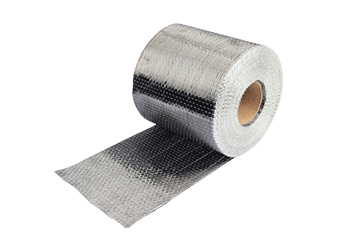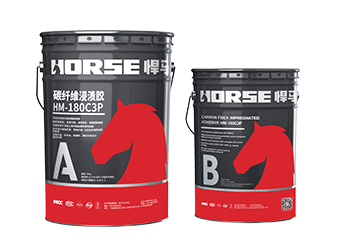Solutions
Horse Construction offers full range of structural strengthening materials with technical supports, documentation supports, products supports, project supports.
Fiber-Reinforced Polymer (FRP) Systems
Since the mid-1980s, externally bonded fiber-reinforced polymer (FRP) systems have revolutionized reinforcement technology in the global structural engineering field. From initial trials in only a few concrete structure repairs to becoming a "universal reinforcement solution" covering multiple materials and scenarios, the application landscape of FRP systems continues to expand at an astonishing pace.
Application Scope of FRP Reinforcement Systems: Coverage of All Structural Types
The strong adaptability of FRP systems allows them to easily meet the reinforcement needs of almost all structural types:
Concrete Structures
Building Structures: Beams, slabs, columns, and walls are the most common application areas for FRP. For example, when the floor slabs of existing office buildings are insufficient to support the load of newly added equipment, bonding FRP sheets can effectively improve their bending resistance; if the seismic performance of the shear walls of residential buildings does not meet current standards, bonding carbon fiber FRP fabric can significantly enhance their ductility and shear strength.
Specialty Concrete Structures: Chimneys and smokestacks are subjected to long-term corrosion from flue gas and strong wind loads, and the corrosion resistance, lightweight, and high-strength characteristics of FRP make it crucial for their survival; FRP can provide precise solutions for crack repair in tunnel linings, seepage prevention and reinforcement of silos, explosion-proof reinforcement of pipelines, and even improving the load-bearing capacity of domes and trusses.
Masonry Structures
The seismic reinforcement of old brick and tile houses and ancient stone buildings is an important application scenario for FRP . By attaching FRP strips or meshes, loose masonry blocks can be "woven" into a whole, significantly improving the shear and seismic performance of the walls. For example, a Renaissance-era stone church in Italy, reinforced with carbon fiber FRP mesh, successfully withstood several earthquake impacts, preserving its historical appearance intact.
Timber Structures
In the reinforcement of wooden beams and columns in ancient buildings, FRP (fiberglass reinforced plastic) is considered a "minimally invasive repair marvel." It can compensate for the strength degradation of wood caused by insect infestation and weathering through bonding or wrapping, with almost no damage to the original appearance of the building. The century-old wooden shrine in Kyoto, Japan, has maintained its structural safety through numerous typhoons thanks to FRP reinforcement.
Steel and Cast Iron Structures
For severely corroded steel components (such as steel beams in industrial plants and steel cables in bridges), FRP cladding can not only isolate corrosive media, but its synergistic stress with the steel can also restore or even improve the structural load-bearing capacity. In the repair of leaks in cast iron pipes (such as old urban water supply pipes), FRP lining technology can achieve the dual effect of "internal reinforcement and external seepage prevention".
The Underlying Logic of FRP Technology's Dominance: A Dual Revolution in Materials and Construction
The rapid global expansion of FRP systems stems from its disruptive breakthroughs in material performance and construction efficiency:
A "Reducive Force" in Material Performance
Lightweight and High-Strength: Carbon fiber FRP boasts tensile strength more than five times that of ordinary steel, yet weighs only one-quarter of steel, adding virtually no extra burden to the original structure during reinforcement.
Corrosion Resistance: FRP exhibits exceptional resistance to corrosive media such as acids, alkalis, and salts. In harsh conditions like marine environments and chemical plants, its service life is several times that of traditional steel.
Fatigue Resistance: In scenarios involving repeated loads, such as bridges and factories, FRP suffers far less fatigue damage than steel, ensuring long-term, stable reinforcement performance.
A "Revolution in Efficiency" in Construction Technology:
Simplified Procedures: FRP reinforcement requires no large hoisting equipment; it can be completed in just a few steps, including surface treatment, bonding, and curing. For example, the construction period for column reinforcement in a 15-story building is only half that of traditional steel-clad reinforcement.
Minimally Invasive and Environmentally Friendly: It causes minimal disruption to the normal use of existing buildings, and the construction process is noise-free and dust-free, making it perfectly suited for reinforcement projects in urban centers.
You can find anything here you are in need of, have a trust trying on these products, you will find the big difference after that.

High strength, unidirectional carbon fiber wrap pre-saturated to form a carbon fiber reinforced polymer (CFRP) wrap used to strengthen structural concrete elements.

Good impregnation carbon fiber adhesive for applying carbon fiber reinforced polymer(CFRP) wrap for structural strengthening

High strength, unidirectional carbon fiber fabric pre-saturated to form a carbon fiber reinforced polymer (CFRP) fabric used to strengthen structural concrete elements.